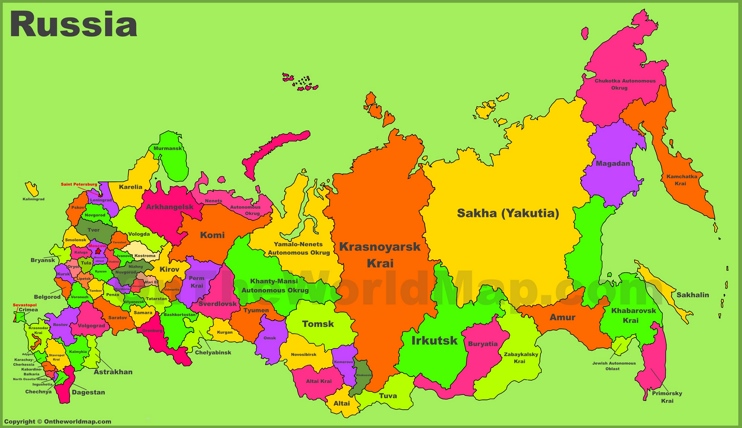There are actually 10:
Notes:

- North America
- Central and Caribbean America
- South America
- Europe
- Russia and the Caucuses
- Asia
- India and Indoasia
- Australia and Oceania
- The Middle East
- Africa
- Why 10 and not seven?
- What about Antarctica?
- Regarding Russia—really? Isn't Russia a country?
- Even culturally, nuances between—for example—Central and South America, with Central America already separated from South America by being a part of North America, exist. On the other hand, clearer-cut distinctions between Central America and North America exists.
- The North and South Poles technically are not continents—as goes for the Arctic, so goes for Antarctica.
- With 21 republics alone, Russia—unlike with the United States with the 12 states that became more or less provinces or districts—is more or less its own continent that includes the state of Russia, just as Australia and Oceania includes the state of Australia.
 |
| From http://ontheworldmap.com/russia/administrative-divisions-map-of-russia.html. |
- In political science, "state" means a government and the territory acquired thereby. Nation states include states of nations (Greek "ethnos", plural "ethni"): e.g., the classical and modern examples of Israel, Greece, and Italy (Roma, which later expanded as the Imperium Romanum that forcibly co-opted several nation states; and now is much-smaller Italy with Italic states such as Tuscany co-opted in it).
- Holdout Rhode Island did not become the 13th state to ratify the Constitution until 1790!
- For the Abrahamic religious groups, there has to be a total of 10 continents. See Daniel 7, focusing on Daniel 7:7-24. However one interprets Daniel 7, the fourth beast and the 11th king has to arise from Jerusalem (cf. Deuteronomy 32:8-10 and Ezekiel 5:5) be different from the other beasts and kings. In fact, even a Medieval schema looked like this with three kingdoms—with formal, informal, and hoped-for co-options—and Jerusalem in the middle:




.gif)